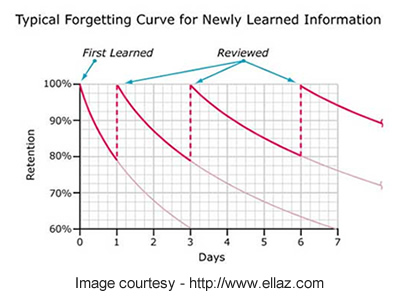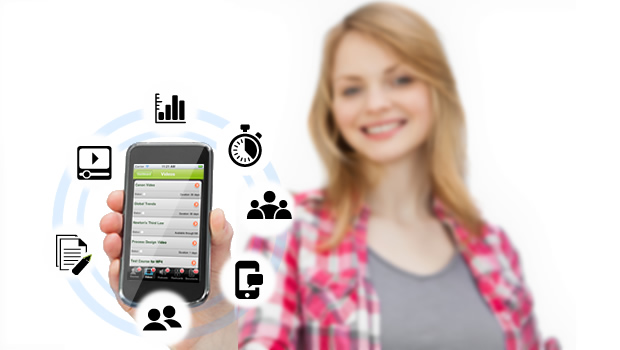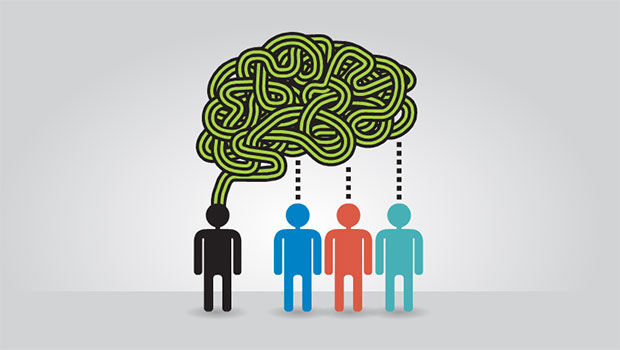An organization’s ability to learn, and translate that learning into action rapidly, is the ultimate competitive advantage. – Jack Welch.
For today’s organizations, the quest for demonstrable ‘competitive advantage’ is unending and seen as the key to success. The ability to identify and capture this advantage is second only to retaining it, which, in the ever-changing landscape of globalization, shrinking markets and the shifting sands of technology is challenging to say the least! Part of this equation is the importance of aligning the workforce, identifying, grooming and retaining talent is critical and therefore maintaining performance skills, knowledge and motivation levels are all key components of sharpening that competitive edge!
We believe mobile learning will play an extremely important role in enabling organizations to support their people manage and retain their competitive edge – check out our earlier webinar “No escaping mobile learning”. In an environment where speed and access to information is critical, the opportunity to extend reach and provide performance support at the crucial ‘point of need’ moment, is in itself a competitive edge! The ready availability of tablets and Smartphones enables organizations to make materials, information and learning available instantly, enabling employees to make more informed decisions, retain and improve their knowledge and skills and practically apply knowledge, processes, policies and company specific information for the benefit of the organization and the individual.
We have identified three key aspects of mobile learning that we feel demonstrate how you can use mobile learning to provide an efficient performance-support capability and an integral part of your training, learning and development strategy.
Knowledge Retention

The success and efficacy of traditional forms of training are dependent on the learner’s ability to “apply” the knowledge they have been given and more importantly – retained! Hermann Ebbinghaus, a German psychologist who pioneered the experimental study of memory and is known for his discovery of the “forgetting curve” and the spacing effect, found that people are likely to forget what they have learnt within 30 minutes! The graph of the forgetting (below) shows how we lose almost half of newly acquired knowledge in a very short period of time – days or weeks – unless this learning is consistently revisited and supported. Rings a bell? Cue “mobile learning” – a medium perfectly suited to “support” this.
Mobile learning allows us to provide just-in-time information, knowledge or resources at the “moment of need”, thereby providing valuable performance support and helping to raise our learners knowledge retention ability. These can be in a variety of formats but here are some of the more creative ways you can do this:
- How-to videos
- Informative Audiocasts
- Expert’s advice
- Photographic and visual resources
- Knowledge sharing and collaborative tools
Context And Timing
The 64 million dollar question of “When do we train our people?” continues to perplex us and while there is no correct or even incorrect answer, the timing and context of the training are major factors in the success or failure of your training initiative. Mobile learning by its very nature of ‘portability and accessibility” provides us with the ability to provide the ‘context and timing’ to a training or performance requirement.
For instance, consider a situation (illustrated below) where a learner is working on a task that needs to be completed quickly and might be quite complex or technical. By being able to access information, resources or even an ‘expert’ instantly, he is able to complete the task correctly and quickly and with confidence! Of course, the key is also to ensure the resources and information required is “contextually” relevant, simple and easily understood. Another instance and application of mobile learning and performance support!

An engineer working on servers in data centre accessing help via a tablet device
The 3rd Dimension Of Blended Learning
The movement of learning from its traditional place in the classroom was first seen and felt with the advent of eLearning. After a period of trying to replace one with the other, “blended” learning was born, where the two mediums of delivery complemented and supplemented each other. Mobile learning now offers us a ‘third’ dimension! It gives us the ability to extend our learning and training into the area of “application” of learning and the opportunity to see the results of training and learning. It allows the learner to take their training with them and use it when most required. As an extension to the classroom and eLearning, the mobile learning component can be designed for a specific purpose or need and here are just some examples of this:
- Reference materials
- Access to experts and expert advice
- Process flow charts
- Technical drawings
- Policies and procedures
So is this the tip of the iceberg? We believe so! These are just three areas where we believe mobile learning can and will make a difference. and while most of us are already using it like this in our personal lives it hasn’t yet made an impact in our workplace. But it will!
We would love to hear your thoughts and opinions, especially if you are already using mobile learning! We look forward to hearing from you.













